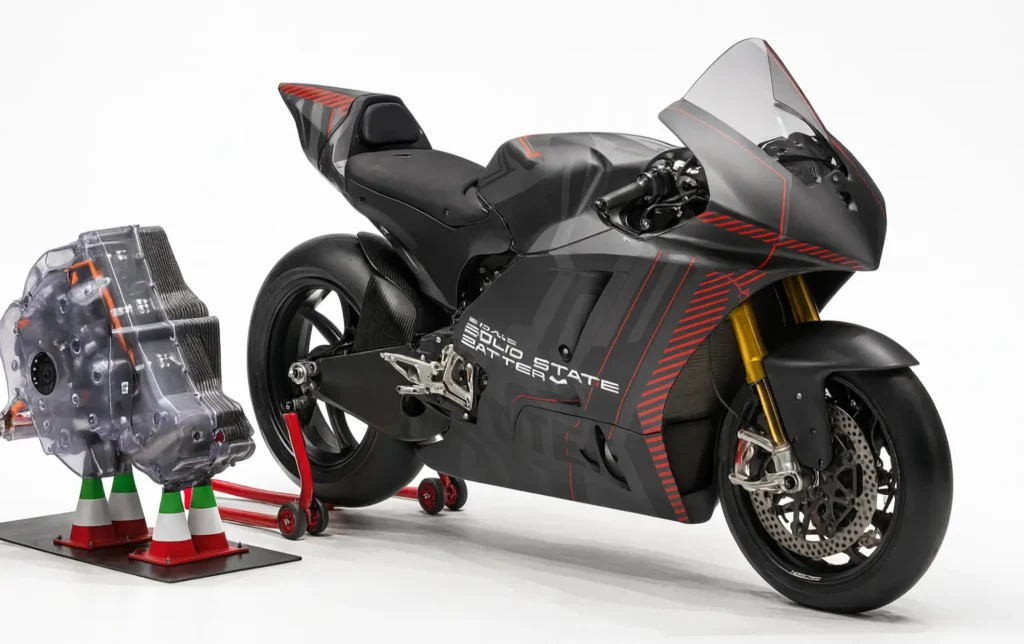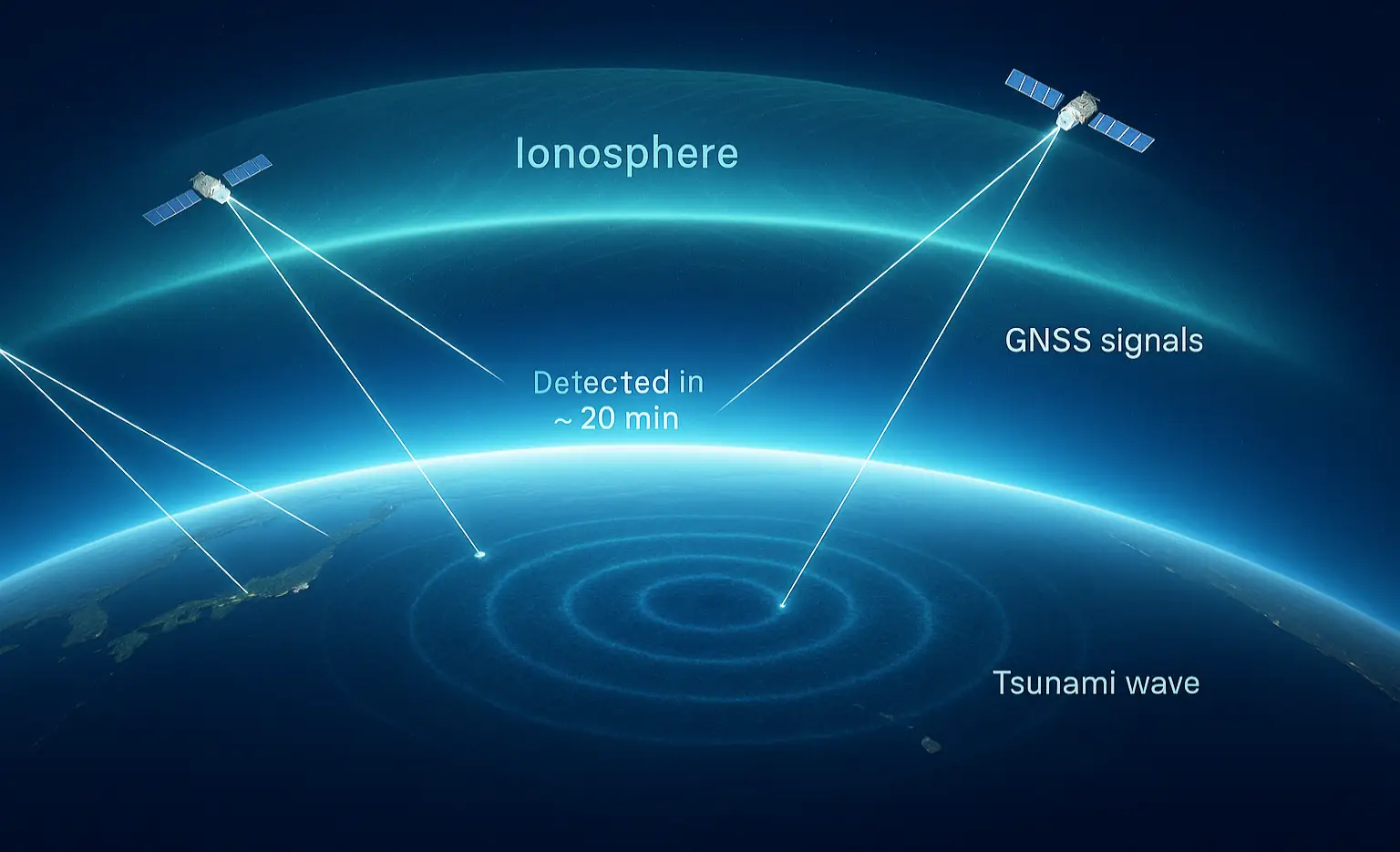If a superbike brand were to make solid-state batteries real, it would need a system—not a single breakthrough. Ducati’s latest V21L prototype, unveiled with QuantumScape solid-state cells at IAA Mobility, is less a product launch and more a blueprint for how racing R&D, Volkswagen’s battery arm PowerCo, and a maturing anode-free chemistry can align to solve weight, energy density, and charge-time barriers in performance motorcycles. The show bike didn’t announce a showroom date, but it did something arguably more important: it demonstrated a viable integration pathway from lab cells to a running vehicle platform with concrete metrics and a clear manufacturing counterpart.

Why this moment matters
For years, “solid-state” has been a promise trapped in slide decks; Ducati’s V21L riding across an IAA stage with QuantumScape QSE-5 cells is the first public, live demonstration of an anode-free solid-state battery powering a real vehicle. The tech’s claims—around 844 Wh/L energy density, 10–80% in just over 12 minutes, and 10C continuous discharge—map exactly to what a superbike needs: smaller packs, faster pit-window charging, and stable high-power output. It’s not retail-ready, but it’s a credible inflection that ties cell progress to vehicle-level integration and a manufacturing license pathway via PowerCo.
The Ducati–VW–QuantumScape triangle
- Ducati: Provides the high-performance platform (V21L) and race-derived requirements—aggressive weight budgets, thermal headroom, and repeatability under track loads.
- PowerCo (Volkswagen Group): Owns scale-up and licensing, committing capital and manufacturing capability to translate pilot-line cells into automotive-grade production.
- QuantumScape: Delivers anode-free solid-state cells (QSE-5) made via Cobra process, demonstrating volumetric energy density and charge rate progress necessary to shrink packs while maintaining power.
This division of labor clarifies who solves what: Ducati validates use-cases and packaging, QuantumScape unlocks density and kinetics, and PowerCo builds the bridge to gigawatt-hour supply.
Lessons from MotoE
Ducati’s three seasons supplying MotoE yielded a crucial artifact: an 8.2 kg reduction in the battery pack through iterative design and cell evolution, even before solid-state integration. The company remains transparent about the two blockers: weight and usable range versus combustion benchmarks, which still define the adoption threshold for track and road superbikes. That honesty makes the solid-state pivot legible—higher energy density is the only credible route to cut mass without sacrificing performance windows.
Pack-to-track fit
Solid-state’s appeal isn’t just density—it’s the multi-metric vector: energy density for lighter packaging, rapid charge for quick-turn sessions, and high C-rate tolerance to sustain superbike-level discharge without precipitous fade. Ducati’s V21L platform integrates these cells in a system designed with Audi specialists for the demonstration, signaling a collaborative approach to BMS, thermal pathways, and mechanical integration tuned for racing loads. Track use is the right crucible: it forces early solutions to hotspot management, current-sharing, and durability under repeat abuse.
Manufacturing reality
QuantumScape’s QSE-5 cells in the demo originated from a San Jose pilot line, with PowerCo holding a non-exclusive license to scale the technology and providing funding to accelerate the joint program. The pathway is pragmatic: demo in a demanding, low-volume Ducati application, de-risk process steps with Audi/PowerCo oversight, and then harden the stack for higher-volume automotive programs. That staggered approach lets Ducati “arrive late and fast” when density crosses the tipping point for a street-legal superbike that doesn’t betray Borgo Panigale’s brand promises.
What the metrics imply
- Volumetric density: 844 Wh/L implies smaller enclosures and more flexible CG tuning, vital for turn-in and mid-corner stability on a superbike chassis.
- Fast charge: 10–80% in just over 12 minutes aligns with session-based riding and track-day cadence where downtime is a performance tax, not just a convenience issue.
- Power delivery: 10C continuous discharge suggests high sustained output—critical for long straights and repeated acceleration, not merely peak bursts.
If those performance envelopes hold under race duty cycles with minimal degradation, the system begins to close the gap on combustion’s weight-to-range and refuel-time advantages at the use-case level that matters to Ducati.
Road to road bikes
Ducati is explicit: this is about building internal know-how so that when battery technology truly matures, a road-going electric Ducati can launch without compromise. With MotoE entering hiatus, the company is still pushing development on V21L and solid-state exploration, demonstrating organizational commitment beyond the series’ marketing halo. The near-term deliverable is competence—validated architectures, thermal models, and pack design heuristics—so the moment cell supply stabilizes, the product pipeline can move.
Risks and realities
No one has solved solid-state at auto-scale yet; pilot-line demos don’t equal yield-stable, cost-competitive packs. Ducati’s own messaging keeps expectations calibrated: despite the 8.2 kg battery reduction to date, today’s weight and range still lag combustion for a true superbike ethos, and the company won’t rush a road model that betrays performance DNA. The good news is alignment: Ducati’s needs and QuantumScape’s cell qualities are unusually well matched, and PowerCo’s license framework provides a plausible industrial runway.
Second-order effects
- Supply chain: A limited solid-state track special could spur premium two-wheeler suppliers (cooling, inverters, composites) to build solid-state-compatible components, seeding an ecosystem.
- Brand strategy: A credible electric Ducati reframes electrification in the performance segment, moving the narrative from “range anxiety” to “session optimization.”
- Group leverage: Success strengthens Volkswagen Group’s conviction and bargaining position for deploying solid-state across premium performance brands where early adopters tolerate higher costs.
What to watch next
- Durability datasets: Cycle life under race thermal loads, post-fast-charge performance stability, and degradation modes.
- Pack mass and CG: Whether density gains translate into net mass reduction once safety margins and cooling are accounted for.
- Manufacturing milestones: PowerCo’s line-readiness updates and transitions from pilot to pre-series runs for QSE-5 derivatives.
If the next public demo couples these cells with documented endurance stints and verified turnaround times, the system will have crossed from spectacle to specification.




